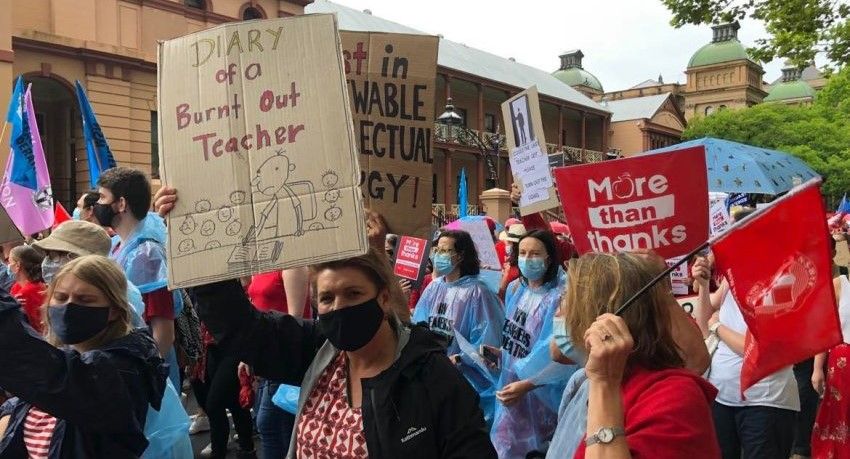
As the worst of the COVID-19 pandemic began to wane, public attention focused on the massive strain placed on the health industry.
Decades of cutbacks, penny pinching and restructures pushed health services to the brink of collapse. Nurses, doctors and others were asked for, and gave, herculean work commitments.
Meanwhile, those of us in education also watched our industry with growing alarm. Education suffered similar cutbacks and neglect, especially in the public sector, which services 65% of students.
For years we warned about the excessive workloads and burn-out of teachers as well as the inequities in funding public schools, meaning that that those most in need are disadvantaged.
Yet, governments at state and federal levels ignored the warnings.
Sure enough, this school year began with alarming reports of shortages of teachers and a promise of worse to come.
The New South Wales Teachers Federation quoted government figures that show public schools are 3300 teachers short. In Victoria, there were 600 teacher vacancies. Meanwhile, the federal government predicted that high schools will be short of 4000 teachers nationwide by 2025.
What is the impact of such shortages of professionals? Classes are collapsed, relief teachers (if available) are brought in, principals are called on to start teaching (which is not always a bad thing, but it leads to other work being left undone) and general, ongoing chaos.
In addition, teachers are leaving the profession in droves.
Last December, a Victorian government minister issued a plea for former teachers to consider rejoining the profession when it was revealed that about 40,000 registered teachers were on leave, or had recently retired.
I am one of those 40,000 and I have no intention of returning. Why? Because at 66 years of age, I cannot think of anything more stressful.
Teachers work an average of 16.5 hours of unpaid overtime a week in Victoria and the pay is lousy for a qualified, experienced professional. The workload has become unbearable, and this includes ridiculous amounts of petty administrative tasks that supposedly make us more “accountable”. Class sizes have also risen to unmanageable levels. And that’s just the short list!
Meanwhile, governments come up with inadequate solutions. State governments, which are supposed to provide 80% of public funding (but don’t), play hardball with teachers during enterprise bargaining periods, providing few condition improvements and weak pay rises.
The Labor federal government continues to fund private schools at record levels and offer plans that include overseas recruitment of teachers, targeting English-speaking countries that have teacher shortages of their own.
Even if the National Teacher Workforce Action Plan, released by federal education minister Jason Clare last December, does appear to have some useful promises, how can we trust that they will implement them?
Does anyone recall the 2012 Gonski report? The Review of Funding for Schooling was supposed to resolve the school funding problem, and provide equitable funding for schools and boost student performance.
The Guardian reported last March that successive governments — including Labor Prime Minister Julia Gillard’s — failed to implement the Gonski report’s funding levels and now education results have suffered a 20-year decline on international benchmarks.
You will not be surprised to hear that funding agreements ended up favouring private schools over public schools.
The ABC reported that private schools have used their greater funding to offer significantly higher salaries and poach teachers from the public system during the current teacher shortage crisis.
No wonder older experienced teachers, like myself, are so angry. We have been fighting against aid to private schools for decades. Every single funding agreement I’ve ever seen flounders when it comes up against the rich, private school lobby.
Labor becomes particularly weak at the knees when the Catholic schools hold out their begging bowls. Bugger all of Labor’s commitments to equity and the disadvantaged.
We at Green Left have long memories: we remember the litany of broken promises that put the rights of the privileged before workers and the disadvantaged. That’s why it’s worth spending $5 or $10 a month on a Green Left supportership. We will not let the teachers' and nurses' struggles against the government’s neoliberal attacks go unreported.
Their struggle is our struggle!